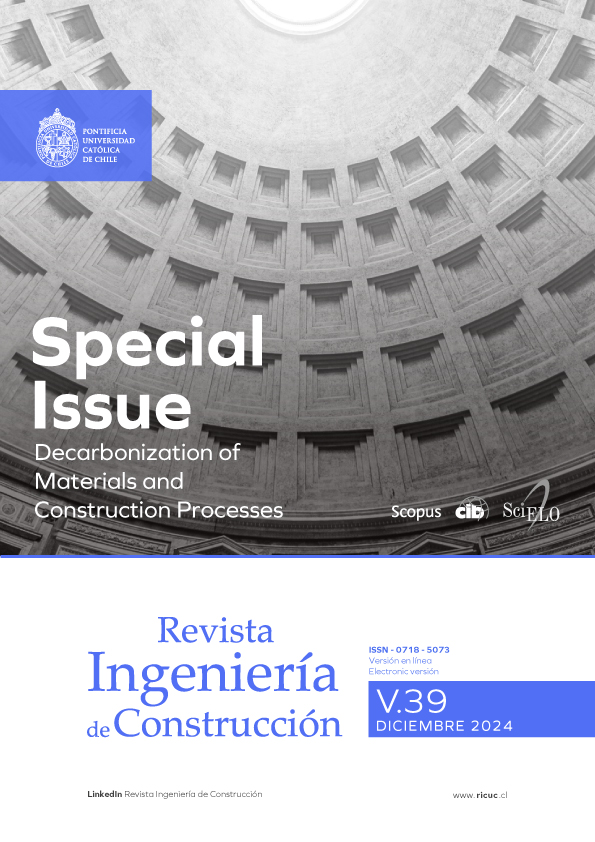The influence of Interground limestone fines and metakaolin on the electrical resistivity of portland-limestone concrete
DOI:
https://doi.org/10.7764/RIC.00129.21Keywords:
Portland-limestone cement, Metakaolin, Chloride Ingress, Electrical Resistivity, DecarbonizationAbstract
The critical climate change has raised concern about the decarbonization of the cement and concrete industry, which is responsible for 8% of global CO2 emissions. Portland limestone cement (PLC), which is made by partially replacing the clinker with up to 15% interground limestone fines (LFs), has been recognized as a viable solution for its feasibility to match the engineering properties of ordinary portland cement (OPC). However, with the necessity of further increasing the LFs contents to meet the desired eco-efficiency, the dilution effect brought by less ultimate hydration products may be detrimental to the long-term performance of reinforced concrete structures, such as chloride-induced corrosion. Thus, this research explores the potential of combining PLC and alumina-rich supplementary cementitious materials (SCMs) to improve the resistivity of the concrete. Concrete specimens were fabricated with PLCs from two sources of three LFs replacement ratios (15, 20, and 25%). MK (8%) is used as the source of alumina. The bulk and surface resistivity results showed that combining PLC with MK can notably improve concrete resistivity even in mixtures with lower amounts of cement. Additionally, compressive strength demonstrated poor correlation with electrical resistivity, which highlights the significance of performance-based design.


